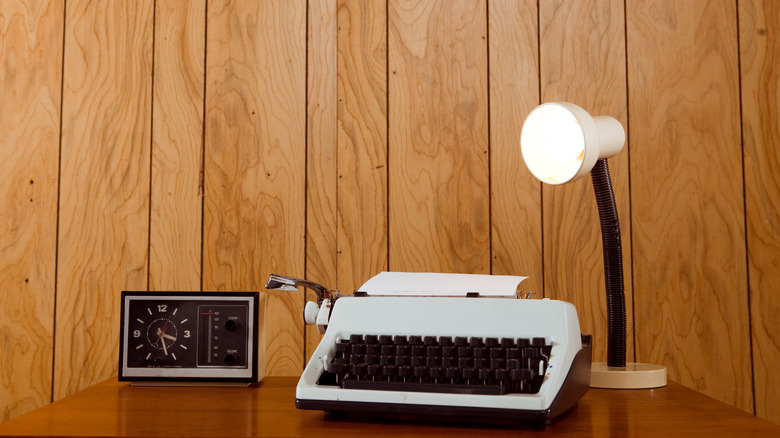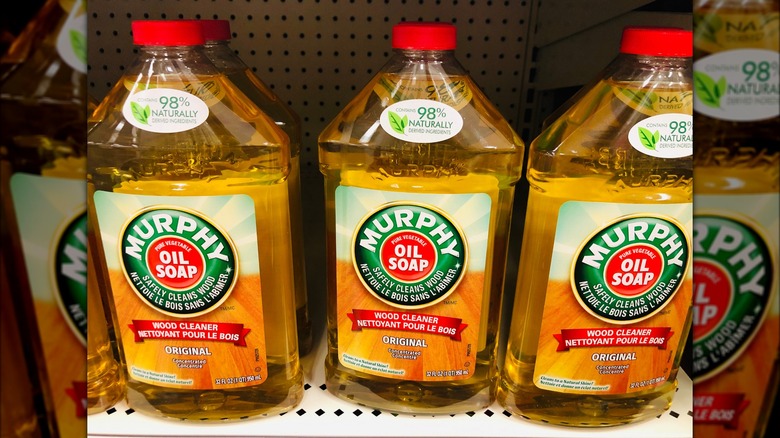The All-Natural Secret Ingredient You Should Be Using To Clean Wood Paneling
Wood paneling was a popular wall fixture between the 1950s and 1970s. So, if you've recently moved into an old home or inherited one from your grandparents, chances are the walls (if not all, at least a few) are covered with wood. With the resurgence of wood paneling, you might already have grand plans in place to give the walls a trendy makeover. But before you paint wood paneling, take a step back and examine if the wood looks covered in dirt, grime, and mildew. If the answer is a resounding yes, an all-natural secret ingredient, Murphy's Oil Soap, will help you clean wood paneling.
Made of 98% natural ingredients and containing natural fragrance, this product will gently clean the panels without drying out or damaging the wood. That being said, this product should only be used on finished surfaces. Don't use it on waxed, unsealed, or unfinished wood, as they might be water-sensitive and sustain damage. In case you aren't sure about the wood's condition, it's best to test this oil-based soap in an inconspicuous area before getting started.
Clean wood paneling with Murphy Oil Soap
Begin by dusting the wood panels with a feather or microfiber duster. This will help remove the surface-layer dust and make cleaning easier. If the walls are incredibly high, use a duster with an extended handle, or you'll have to use a stool (or ladder) and constantly move up and down. Now, combine ¼ cup of Murphy Oil Soap with 1 gallon of warm water. In case the panels are incredibly dirty, add ½ cup of Murphy Oil Soap to the water instead. Mix the soap and water solution with your hand. You can wear a glove, but it's optional since the soap won't harm your skin.
Dip a long mop (sponge and old washcloth work, too) in the cleaning solution and wring it out. Use it to scrub the wood panels. Remember, you might have to prepare the cleaning solution again if the walls have never been scrubbed before and require a second pass, as you don't want to keep dipping the mop in dirty water. However, don't keep the walls wet for too long, as you don't want moisture to seep in. Once the wood panel looks new, wipe it with a dry microfiber cloth to remove residual solution, drips, and runoffs.

